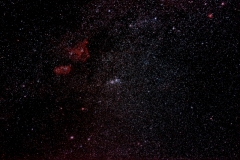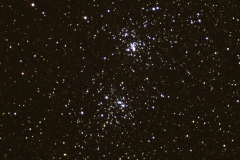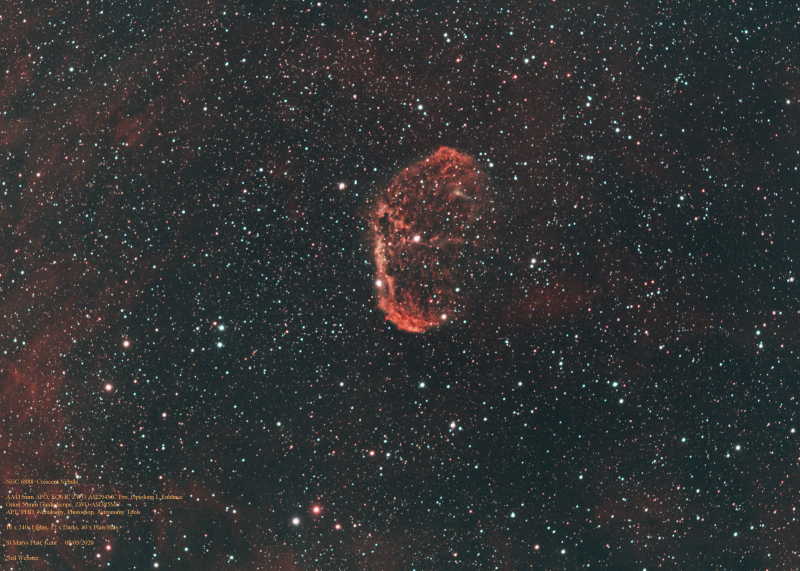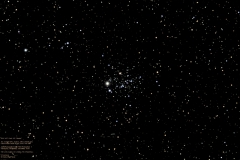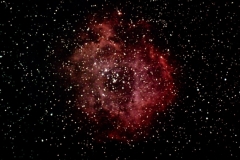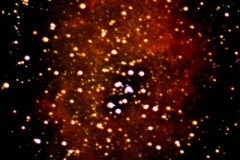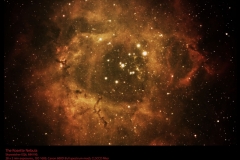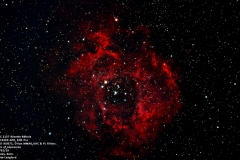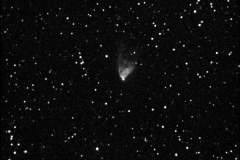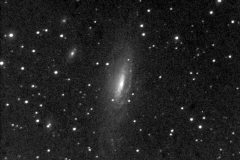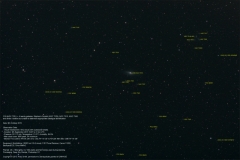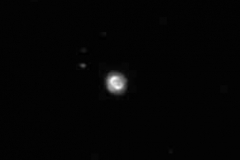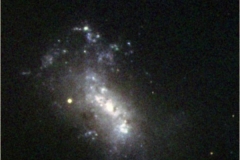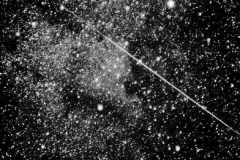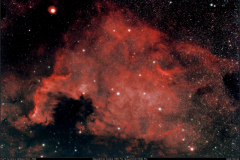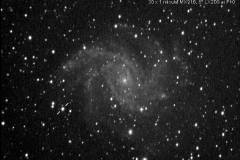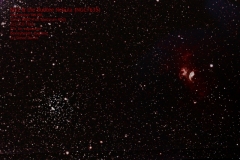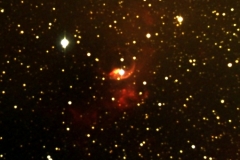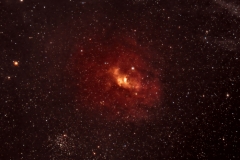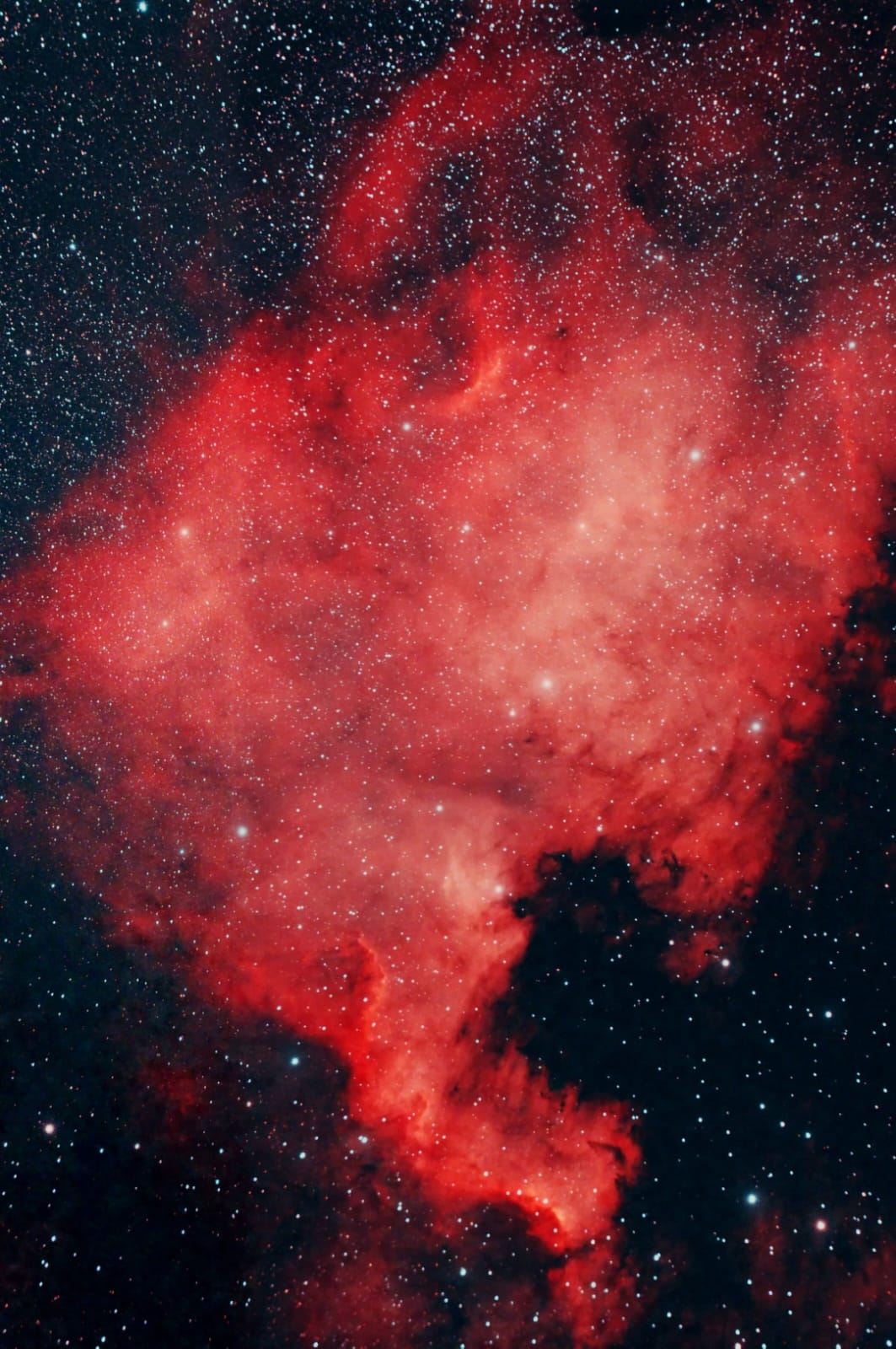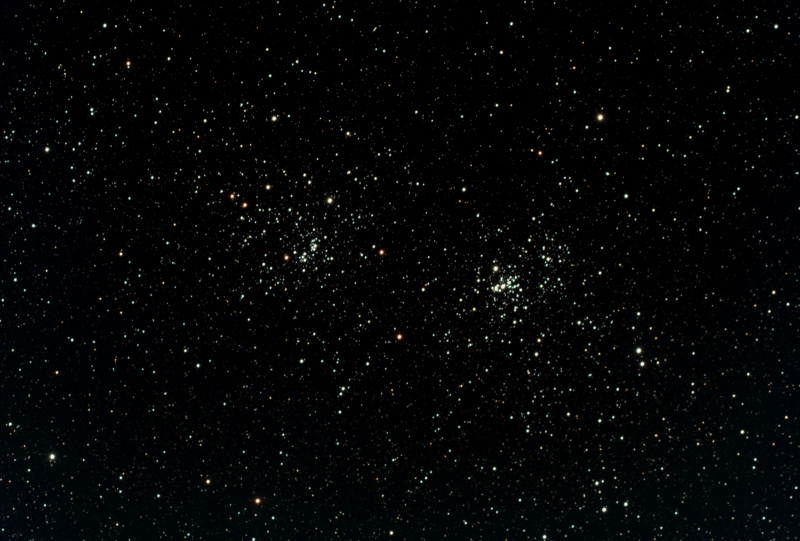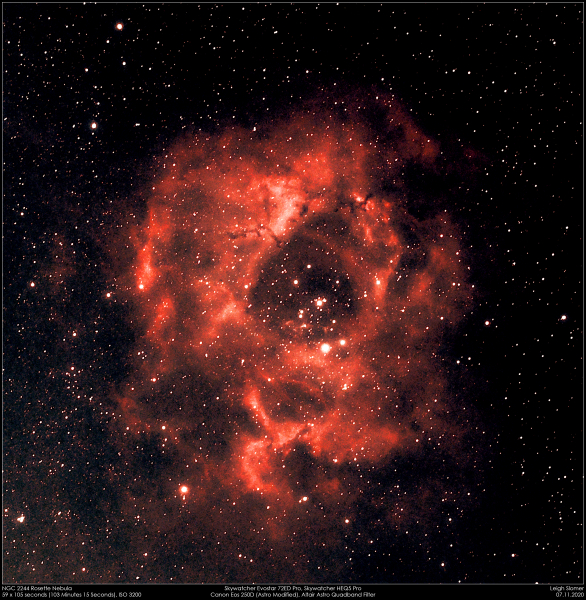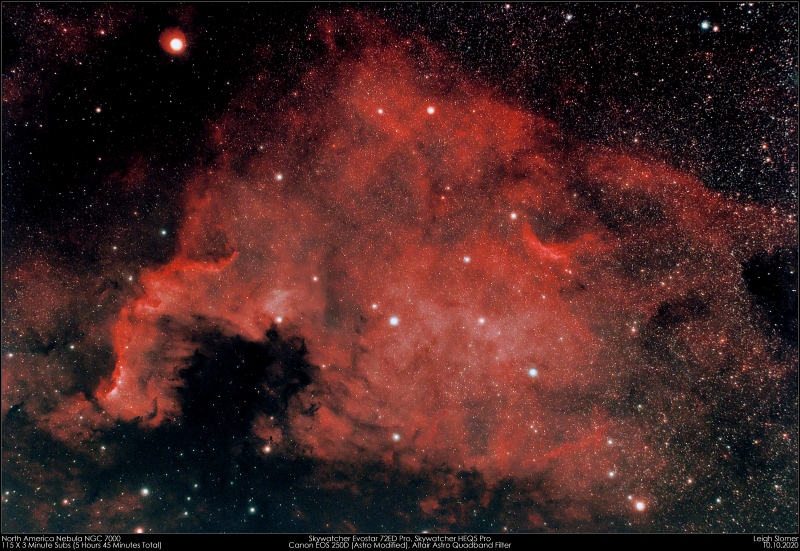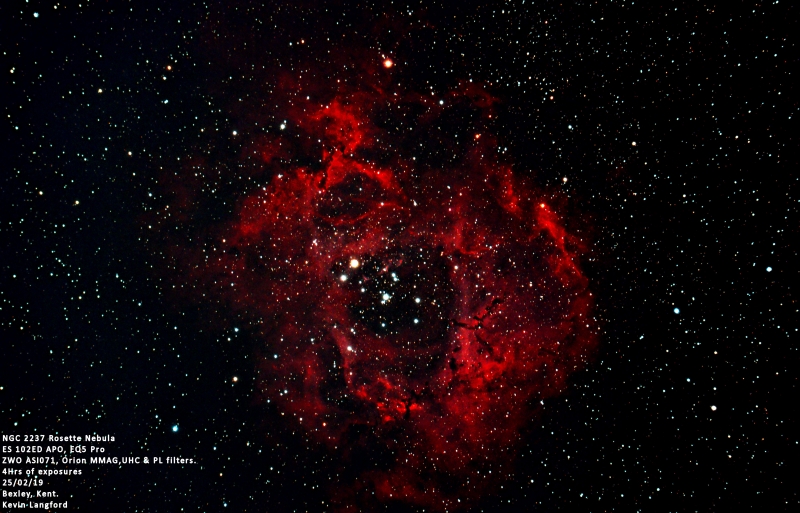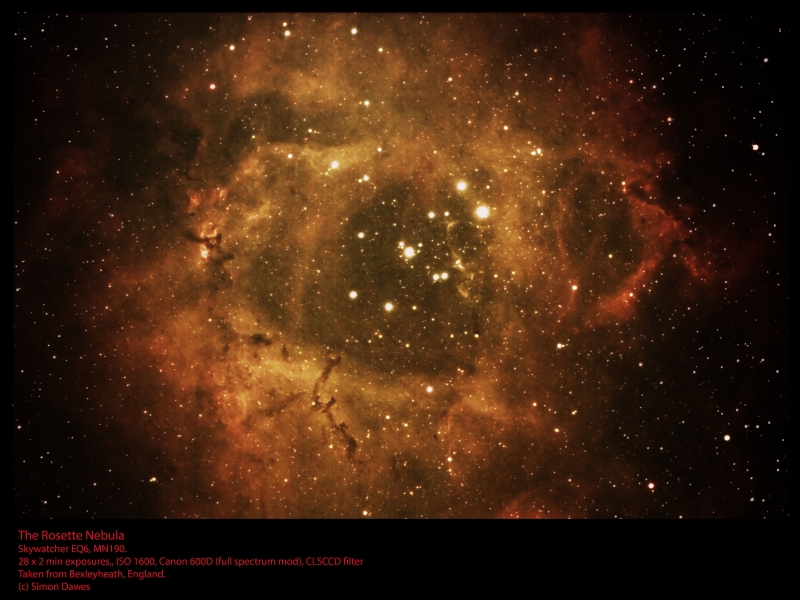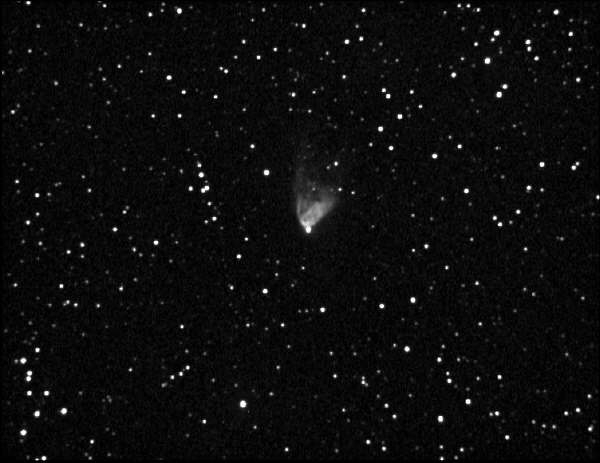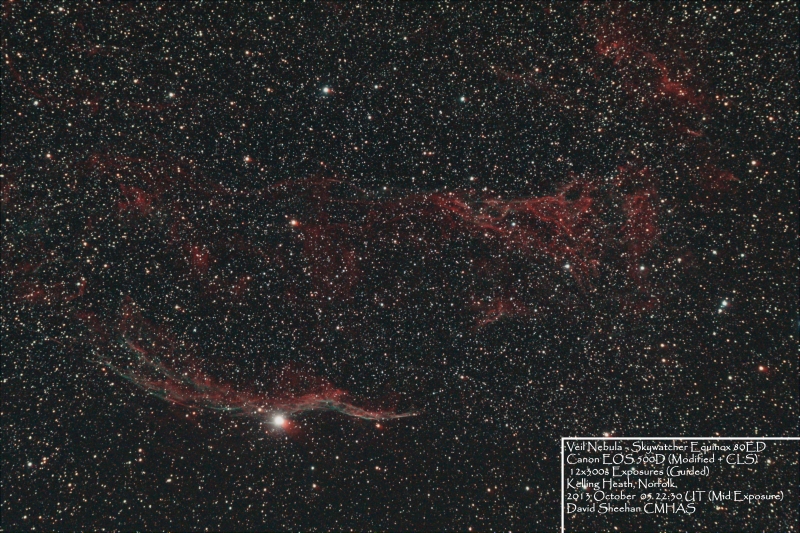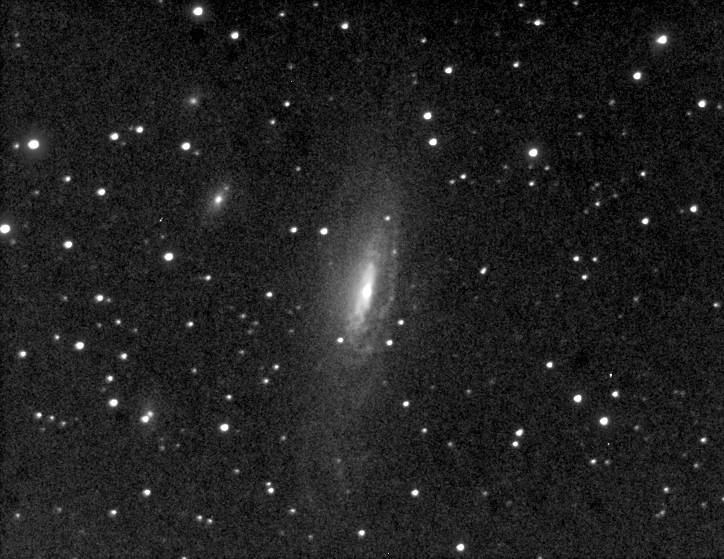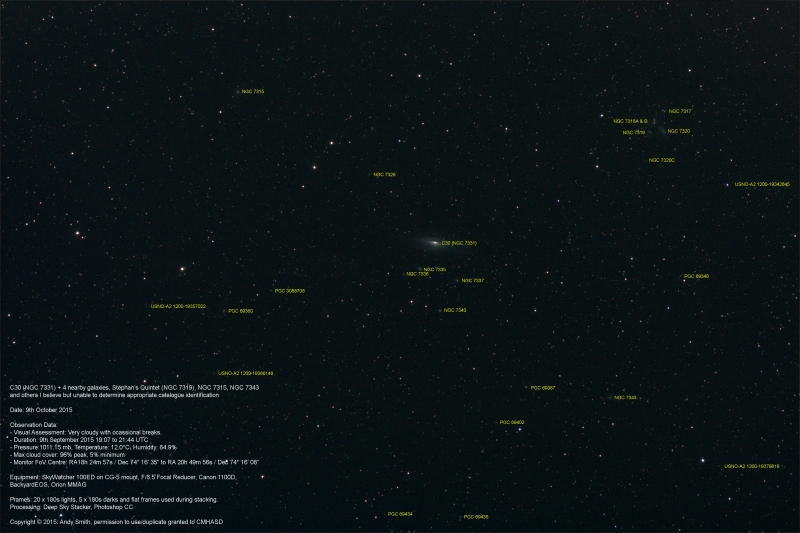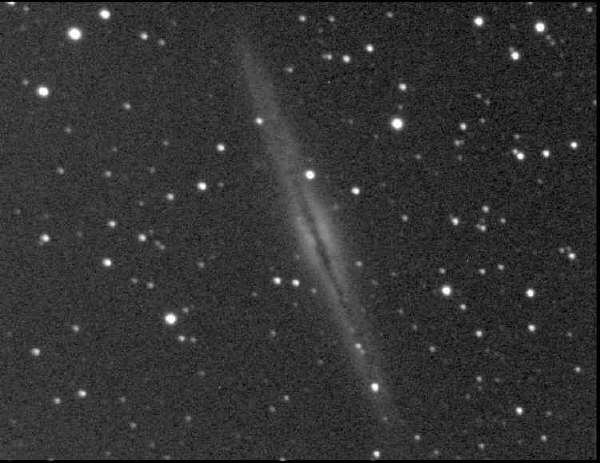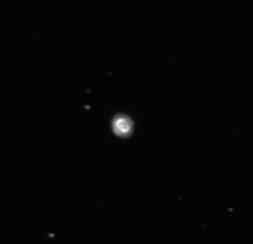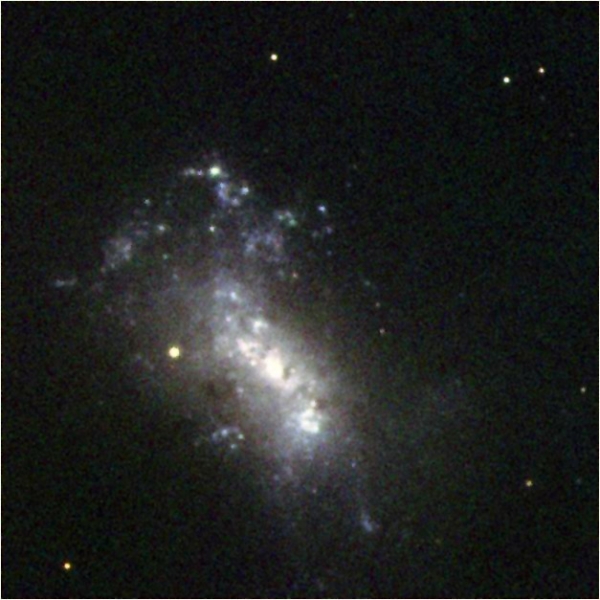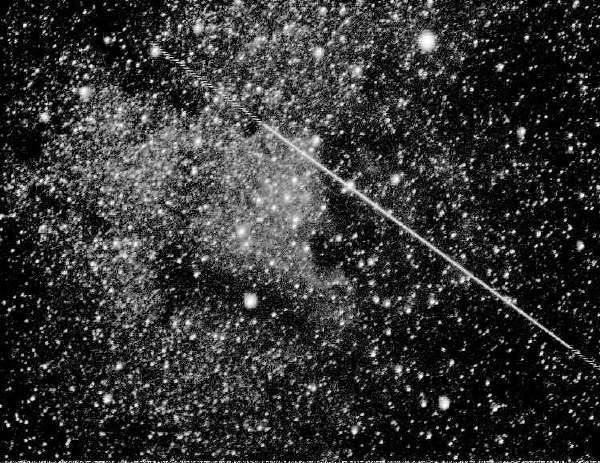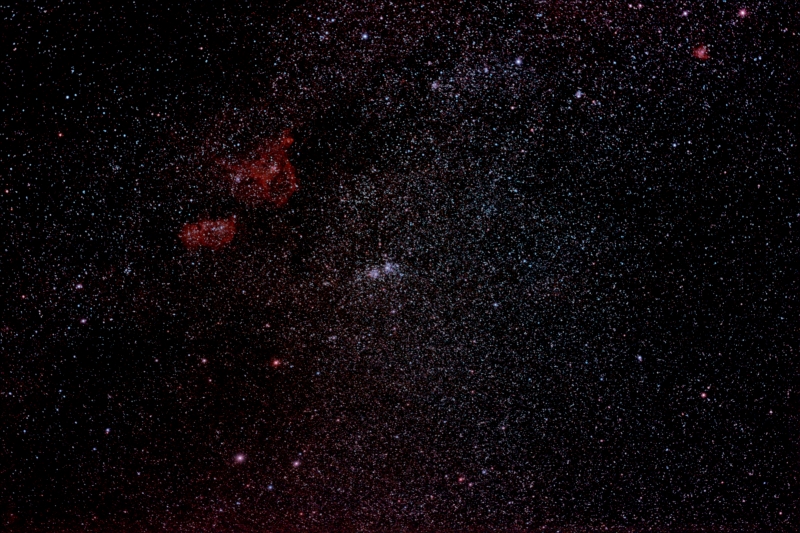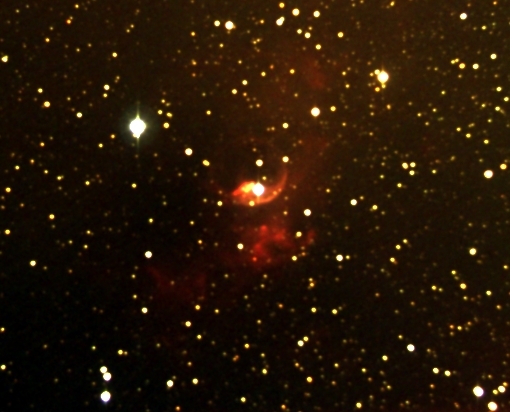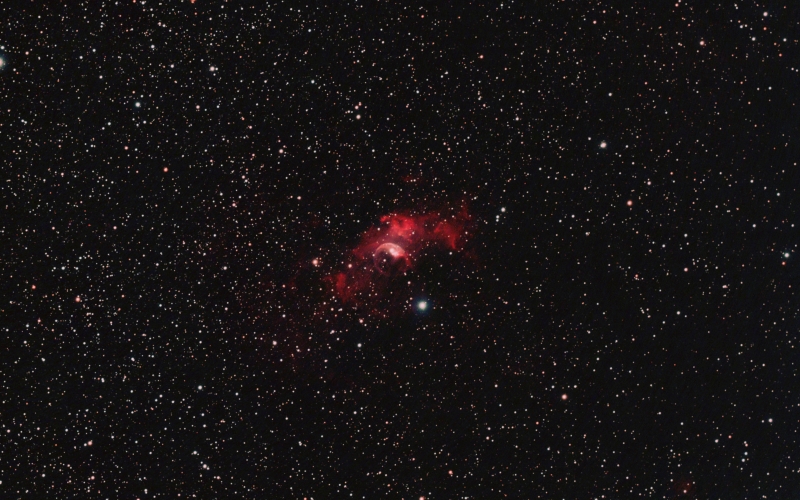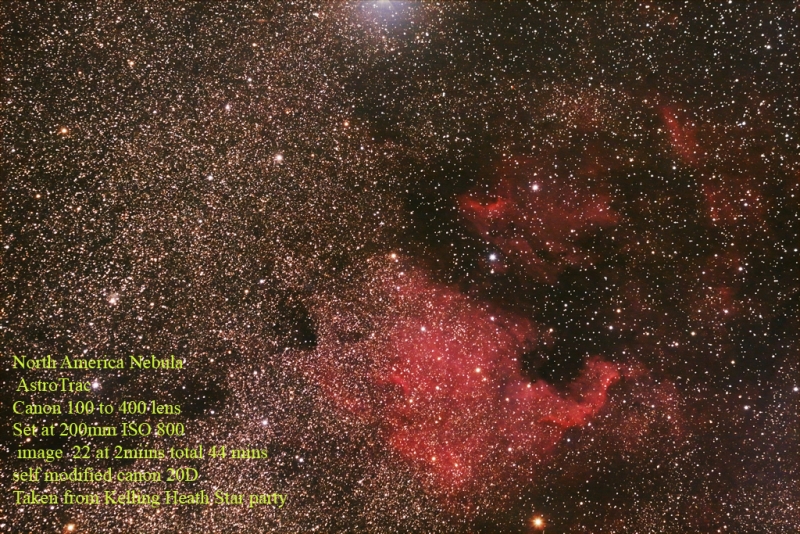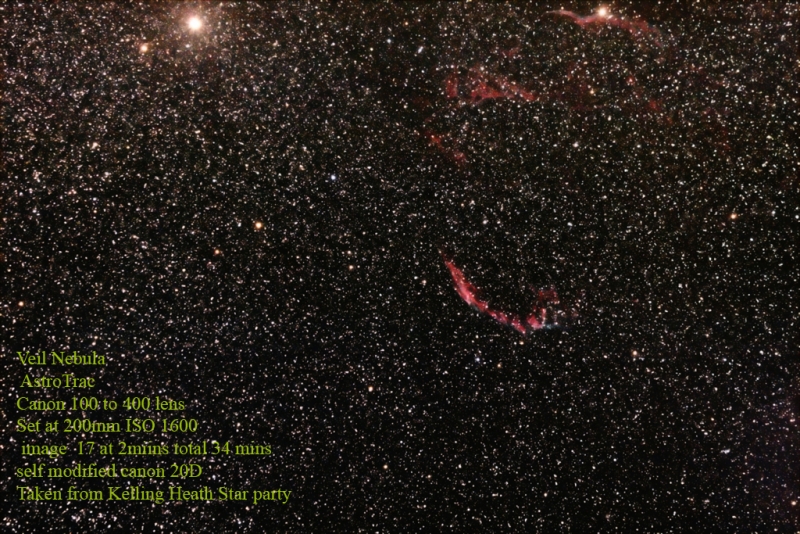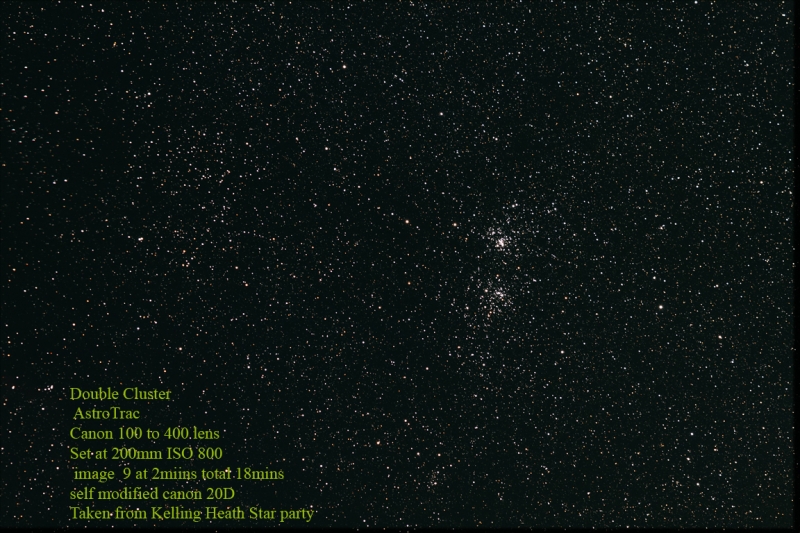The Caldwell list was conceived by Sir Patrick Moore, Caldwell being his Mothers Maiden Name, they are objects that are easy to find and observe suitable for amateur astronomers with modest equipment.
Unlike objects in the Messier catalogue, which are listed in the order they were discovered, the Caldwell catalogue is ordered by declination, with C1 being the most northerly and C109 being the most southerly, although two objects (NGC 4244 and the Hyades) are listed out of sequence.
The North America Nebula by Kevin Langford
An absolutely stunning image by member Kevin Langford of The North America Nebula (NGC 7000 or Caldwell 20). The North America Nebula is an emission nebula in the constellation Cygnus, close to the star Deneb.
ES 102ED APO, 0.7x focal reducer corrector, EQ5 Pro
ZWO ASI071, Orion MMAG,L-eNhance filter
1 1/2 Hrs of exposures
30/08/22
Bexley Kent
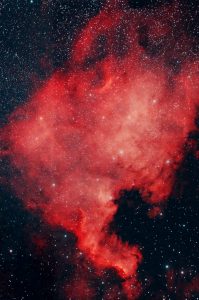
To see a higher resolution photo of the image check out Kevin’s Flickr page at www.flickr.com/photos/77708720@N08/52383552499/
Deep Sky imaging by Dr. Mike Rushton
Dr. Mike Rushton took advantage of some clear skies recently (25th April 2022) and took these 3 super deepsky images using his eVscope of Messier 13, Messier 51 and the Bow Tie Nebula.
Messier 13 (M13) also designated NGC 6205 and also called the Great Globular Cluster in Hercules and the Hercules Globular Cluster, is a globular cluster of a several hundred thousand stars in the constellation of Hercules.

Messier 51, known as The Whirlpool Galaxy and as Messier 51a, M51a, and NGC 5194, is a spiral galaxy found in the constellation Canes Venatici, M51 was the first galaxy to be classified as a spiral galaxy and is 31 million light-years away from Earth.
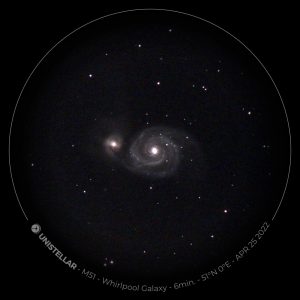
The Bow Tie Nebula also designated NGC 40 and Caldwell 2 is a planetary nebula discovered by William Herschel in 1788. It is composed of hot gas around a dying star. The nebula gets its name from the fact it has an intriguing bow-tie shape.
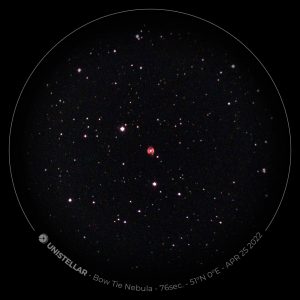
Rosette Nebula in Ha by Kevin Langford
3Hrs of exposures.

To see this image in more detail and to see Kevin’s other superb astro images check out his flickr page at https://www.flickr.com/photos/77708720@N08/
Caldwell 14, C14, The Double Cluster
The Double Cluster is the common name for the naked-eye (OK you will need Binoculars in light polluted areas such as Crayford) open clusters NGC 884 and NGC 869, which are close together in the constellation Perseus. NGC 884 and NGC 869 are at distances of 7600 and 6800 light-years away, respectively, so they are close to one another in space as well.
They are relatively young clusters, with NGC 869 5.6 million years and NGC 884 at 3.2 million years according to the 2000 Sky Catalogue. In comparison, the Pleiades have an estimated age ranging from 75 million years to 150 million years.
They are also blue-shifted, with NGC 869 approaching Earth at a speed of 22 km/s and NGC 884 approaching at a similar speed of 21 km/s. Their hottest main sequence stars are of spectral type B0.
Imaged by: Julian Tworek
Method: AstroTrac Canon 100-400 lens @ 200mm ISO800, 9 x 120s self modified Canon 20D DSLR
Image of the Double Cluster taken from Kelling Heath with a Canon 600D, Modified with the Full Spectrum Mod and a Clip-in CLSCCD filter
Image by Simon Dawes taken on 2010-09-13
Taken at Kelling heath using a Williams Optics ED80 and Canon 650D on a vixen GPDX mount (unguided)
Images by Neil Webster
The Crescent Nebula, Caldwell 27, NGC6888, Sharpless 105
The Crescent Nebula (also known as NGC 6888, Caldwell 27, Sharpless 105) is an emission nebula in the constellation Cygnus, more on wikipedia
Caldwell 13, The Owl Cluster, C13, NGC457,
Caldwell 66, C66, Globular Cluster in Hydra
NGC5694 is a small globular cluster in eastern edge of Hydra. The cluster has a diameter of only 3.6 arc minutes and a visual brightness of 10th magnitude. And the distance to the cluster is 105 thousand light years, very far as for globular cluster.
The Rosette Nebula, Caldwell 49, NGC2237
The Rosette is a popular object for imagers, the complex has the following NGC designations:
- NGC 2237 – Part of the nebulous region (Usually used to denote whole nebula)
- NGC 2238 – Part of the nebulous region
- NGC 2239 – Part of the nebulous region (Discovered by John Herschel)
- NGC 2244 – The open cluster within the nebula (Discovered by John Flamsteed in 1690)
- NGC 2246 – Part of the nebulous region
The cluster and nebula lie at a distance of some 5,200 light years from Earth (although estimates of the distance vary considerably) and measure roughly 130 light years in diameter. The radiation from the young stars excite the atoms in the nebula, causing them to emit radiation themselves producing the emission nebula we see. The mass of the nebula is estimated to be around 10,000 solar masses.
It is believed that stellar winds from a group of O and B stars are exerting pressure on interstellar clouds to cause compression, followed by star formation in the nebula. This star formation is currently still ongoing.
A survey of the nebula with the Chandra X-ray Observatory in 2001 has revealed the presence of very hot, young stars at the core of the Rosette Nebula. These stars have heated the surrounding gas to a temperature in the order of 6 million kelvins causing them to emit copious amounts of X-rays.
Imaged by Keith Rickard
SBIG ST-7XME CCD camera with a 200mm telephoto lens, F9, 3 x 2min images in red, green and blue and 5 x 2min images in luminance
Imaged by Simon Dawes
Imaged on 2019-01-29
I’d taken 2hrs of images but wasn’t able to get Deep sky stacker to stack more than 56 minutes.
Taken with a Canon 600D (Full Spectrum Mod) with a CLSCCD filter on a Skywatcher MN190, mounted on an EQ6 Pro
Imaged by Kevin Langford
Imaged on 2019-02-254 Hrs of exposures
ES 102ED APO, EQ5 Pro
ZWO ASI071, Orion MMAG, UHC & PL Filter
Caldwell 46, C46, Hubble’s Variable Nebula
Caldwell 34, C34, The Western Veil Nebula
The ‘Western Veil’ or Witches Broom Nebula is part of the Cygnus Loop, other parts of the loop include , the ‘Eatern Veil’ (Caldwell 33), and Pickering’s Triangular Wisp. It is part of a large, relatively faint supernova remnant in the constellation Cygnus. The source supernova exploded some 5,000 to 8,000 years ago, and the remnants have since expanded to cover an area of ~3×3 degrees. The distance to the nebula is not precisely known, with estimates ranging from 1,400 to 2,600 light-years.
The analysis of the emissions from the nebula indicate the presence of oxygen, sulfur, and hydrogen.
The nebula is notorious among astronomers for being difficult to see visually, even though it has a bright integrated magnitude of 7. However, a telescope using an OIII filter (a filter isolating the wavelength of light from doubly ionized oxygen), will allow an observer to see the nebula clearly, as almost all light from this nebula is emitted at this wavelength. Using an 8-inch (200 mm) telescope equipped with an OIII filter, one could easily see the delicate lacework apparent in photographs. With an OIII filter, almost any telescope could conceivably see this nebula, and some argue that it can be seen without any optical aid, excepting an OIII filter held up to the eye. This is also one of the largest, brightest features in the x-ray sky.
Image by Julian Tworek
Canon 100-400 Lens @200mm ISO 1600 modified Canon 20D Taken at Kelling Heath Star Party
The Western Veil is the nebula in the Middle of the image
Image by Julian Tworek
Canon 100-400 Lens @200mm ISO 1600 modified Canon 20D 17 x 120s Taken at Kelling Heath Star Party
The Western Veil is the bright nebula in the top right of the image
Caldwell 33, C33, The Eastern Veil Nebula
The ‘Eastern Veil’ is part of the Cygnus Loop, other parts of the loop include , the ‘Western Veil’ or ‘Witch’s Broom Nebula’ (Caldwell 34), and Pickering’s Triangular Wisp. It is part of a large, relatively faint supernova remnant in the constellation Cygnus. The source supernova exploded some 5,000 to 8,000 years ago, and the remnants have since expanded to cover an area of ~3×3 degrees. The distance to the nebula is not precisely known, with estimates ranging from 1,400 to 2,600 light-years.
The analysis of the emissions from the nebula indicate the presence of oxygen, sulphur, and hydrogen.
The nebula is notorious among astronomers for being difficult to see visually, even though it has a bright integrated magnitude of 7. However, a telescope using an OIII filter (a filter isolating the wavelength of light from doubly ionized oxygen), will allow an observer to see the nebula clearly, as almost all light from this nebula is emitted at this wavelength. Using an 8-inch (200 mm) telescope equipped with an OIII filter, one could easily see the delicate lacework apparent in photographs. With an OIII filter, almost any telescope could conceivably see this nebula, and some argue that it can be seen without any optical aid, excepting an OIII filter held up to the eye. This is also one of the largest, brightest features in the x-ray sky.
Image by Julian Tworek
Canon 100-400 Lens @200mm ISO 1600 modified Canon 20D Taken at Kelling Heath Star Party
The Eastern Veil is the faint nebula in the top right
Image by Julian Tworek
Canon 100-400 Lens @200mm ISO 1600 modified Canon 20D 17 x 120s Taken at Kelling Heath Star Party
The Eastern Veil is the bright nebula in the middle of the image
Caldwell 30, C30, NGC7331
C30 (NGC 7331) is a spiral galaxy about 40 million light-years away in the constellation Pegasus. It was discovered by William Herschel in 1784. C30 is the brightest member of the NGC 7331 Group of galaxies.
Caldwell 23, C23, NGC891
C23 is an edge on unbarred spiral galaxy about 30 million light-years away in the constellation Andromeda. It was discovered by William Herschel on October 6 1784. The galaxy is a member of the NGC 1023 group of galaxies in the Local Supercluster. It has a H II nucleus.
Visually, the object is visible in small to moderate size telescopes as a faint elongated smear of light with a dust lane visible in apertures 200mm and above.
Caldwell 22, C22, NGC7662
C22 is a fairly popular planetary nebula for casual observers.
A small refractor will reveal a star-like object with slight nebulosity. A 6 in. telescope with a magnification around 100x will reveal a slightly bluish disk. Telescopes of diameter 16″ or greater may reveal slight colour and brightness variations in the interior.
Caldwell 21, C21, NGC4449
Caldwell 20, C20, The North America Nebula
The North America Nebula covers an area of more than four times the size of the full moon, but its surface brightness is low so normally it cannot be seen with the unaided eye.
Binoculars and telescopes with large fields of view (approximately 3°) will show it as a foggy patch of light under sufficiently dark skies.
However, using a UHC filter which filters out some unwanted wavelengths of light, it can be seen by the naked eye under dark skies. Its prominent shape and especially its reddish colour (from the hydrogen Hα emission line) only show up in photographs of the area.
Image of the Double Cluster and North American Nebula taken from Kelling Heath by Simon Dawes, with a Canon 600D, Modified with the Full Spectrum Mod and a Clip-in CLSCCD filter
Imaged by: Julian Tworek
Method: Canon 100 – 400 Lens @ 200mm, ISO 800, 22 x 120s exposures on Modified Canon 20D and AstroTrac
Taken from Kelling Heath Star Party
Image by Leigh Slomer NGC 7000, Sharpless 117, Caldwell 20 The North America Nebula. An emission nebula located close to Deneb in the constellation of Cygnus. My 1st serious attempt at an astro image. Taken from images captured over 3 nights in late September and early October, it was my 1st image to go more than a few minutes over 1 hour in total exposure time and the 1st to incorporate proper calibration frames.
Caldwell 15, C15, The Blinking Planetary
C15 is a planetary nebula located in the constellation Cygnus. It is commonly referred to as the “blinking planetary”, although many other nebulae can exhibit such “blinking”.
When viewed through a small telescope, the brightness of the central star overwhelms the eye when viewed directly, obscuring the surrounding nebula. However, it can be viewed well in the peripheral vision (averted vision), which causes it to “blink” in and out of view as the observer’s eye wanders.
A distinctive feature of this nebula are the two bright patches on either side, which are known as FLIERs.
Caldwell12, C12, The Fireworks Galaxy
NGC 6946, also known as the “Fireworks Galaxy”, is an intermediate spiral galaxy about 10 million light-years away, on the border between the constellations Cepheus and Cygnus. It was discovered by William Herschel on September 9, 1798.
NGC 6946 is highly obscured by interstellar matter of the Milky Way galaxy, as it is quite close to the galactic plane. Nine supernovae (SN 1917A, SN 1939C, SN 1948B, SN 1968D, SN 1969P, SN 1980K, SN 2002hh, SN 2004et, and SN 2008S) have been observed in NGC 6946.
Caldwell 11, C11, The Bubble Nebula
NGC 7635, also called the Bubble Nebula, is a H II region emission nebula in the constellation Cassiopeia . It lies close to the direction of the open cluster Messier 52. The “bubble” is created by the stellar wind from a massive hot, magnitude 8.7 young central star. The nebula is near a giant molecular cloud which contains the expansion of the bubble nebula while itself being excited by the hot central star, causing it to glow. It was discovered in 1787 by Friedrich Wilhelm Herschel. The star SAO 20575 or BD+602522 is thought to have a mass of 10-40 Solar masses.
Members have successfully imaged Caldwell 11 through severe light pollution (Greater London) using 8″ telescopes.
Imaged by Simon Dawes
Skywatcher MN190
Canon 600D (Full Spectrum Mod) + CLSCCD Filter
27m Exposure from Bexleyheath, England.
Imaged by Keith Rickard
SBIG ST7-XME CCD camera, 8″ Meade LX200 Schmidt Cassegrain Classic at F6.3
30 x 30sec images in red, green, blue and luminance
Sky Watcher Mak-Newt 190mm, Canon modified 40D, ISO 800, 73 X 3min subs total 3hrs 39min
PHD guiding with QHY5 15\11\2010, EQ6 Imaged by Julian Tworek
Images by Kevin Langford
The Caldwell Objects and How to Observe Them
Reviewed for the RAS Journal; Observatory, June 2010
1st Edition, by Martin Mobberley (Springer) 2009, Pp 288, 23.1 x 17.5 cm.
Price £24.99 (paperback; ISBN 978-1-4419-0325-9)
This book, as expected, is primarily concerned with the description and details of the Caldwell objects and this is covered to the depth suitable for an amateur astronomer. There is also a section on the compiler of the Caldwell list, Sir Patrick Moore, as well as primers on observing and imaging in general. These additional chapters are not covered in any depth. Whilst they will provide the novice with some guidance, the reader will have to go elsewhere for a comprehensive guide.
The book puzzles me slightly; I’m unsure if I should be using it as a reference book, a book to help plan an observing session or if I should take it to bed and read it from cover to cover. It sets out to be a reference book, with consistent levels of information on all the objects. It has a good index but no summary tables. Used as an observing planning aide it is likely to become tiresome because of the lack of tables, the reader will have to flick through many pages to find what objects are suitable for their equipment and location or use the inside back cover to make their own tables.
The basics for each object are covered on a single page, such as position, brightness, suggestions for finding the object and the best time of year to observe. The author also recommends the best aperture and filters for observing and provides good comprehensive descriptions. A second page for each object is used for charts and images (generally from amateur astronomers). The author’s personality and humour does come through in his writing making the book an easy and enjoyable read (I particularly like Caldwell 8 where the author describes all the great open clusters in Cassiopeia before describing C8 as ‘less than mind blowing’.).
You might be forgiven for thinking that this book is all you need (apart from a telescope!) to begin observing the Caldwell objects. However the charts provided are not suitable for finding the objects and this is pointed out by the author. Despite their low quality and small size, the charts do provide the reader with the general location in the sky and for this they are useful. The charts contain a number of objects and are only printed alongside the first object described and it quickly became irritating having to flick back to previous objects to look at the associated chart, especially when there is ample space for the chart to be repeated for most objects.
For £24.99 I would not buy this book, but if cheaper or given as a gift I would happily add it to my collection.
Reviewed by Simon Dawes
Other Images
Sun | Comets | Mercury | Venus | Atmospheric Optics | Meteors | Auroa and NLC | Moon | Minor Planets | Mars | Jupiter | Saturn | Uranus | Neptune | Messier | Caldwell | All Deep Sky | Conjunctions | Transits | Solar Eclipse | Lunar Eclipse | Wide Field |ISS & Space Junk | Exo-Planets
All images are copyright. Permission must be sought to from the image owner to the use of any of these images.


